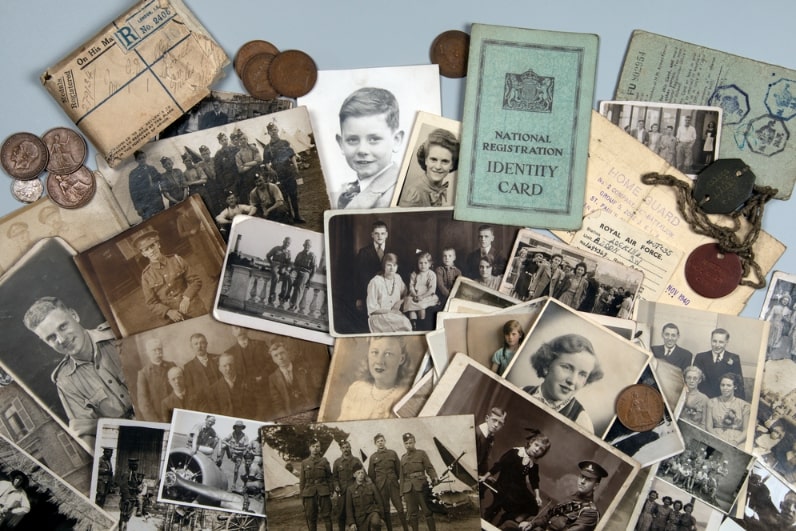Introduction: In this article – to celebrate Family History Month – Gena Philibert-Ortega suggests three goals for family historians to set for themselves. Gena is a genealogist and author of the book “From the Family Kitchen.”
Family History Month 2024 is almost over, and if you’re like me, you are still wondering how October went by so fast. But there’s still time to consider your genealogy goals and what you want to accomplish in 2024 and the New Year. Here are three ideas for family historians to consider.

Photo credit: https://depositphotos.com/home.html
1) Scan
Photographs, correspondence, documents, and other family history records must be scanned for at least two reasons. One reason, of course, is to digitize them, which preserves the items should anything happen – such as a natural disaster, vermin infestation, or burglary. My family has had to evacuate a few times due to nearby fires; and when it’s time to go, you can’t take everything. Having your essential family history items scanned helps with peace of mind.
Scanning can be an overwhelming task. I know a lifetime of photos and research equals a large amount of time scanning each item. However, it’s important to at least start. Prioritize what needs to be scanned first and then tackle that pile. Otherwise, it will never happen, and you run the risk of your family feeling overwhelmed by inheriting it and deciding to just dispose of it.
The second reason to scan your family history is to make it easier to share it with everyone who is interested.
2) Share
Are you sharing your family history? How will your family and unknown-to-you cousins access your research when you pass away?
I want other family members to have access to photos and items I’ve inherited. I want them to have the ability to see the records I’ve gathered. I want them to benefit from the work I’ve done. That includes not only my descendants but family who are distantly related to me.
You can share your family history in a number of ways. Scanning what you have allows you to send the files via email, store them on a cloud service, or attach them to an online tree. Consider how you will share items with known family members and unknown ones. Sharing may require you to provide copies of files in multiple ways. For example, I have an online tree to which I have attached photographs, and I have folders in an online cloud service of photos to which I have provided family members with a link.
Make sharing a priority. Don’t let your family history die with you.
3) Organize
When I started researching a few decades ago, we made many photocopies. Once we had access to online databases, we printed out every record we found. Today, that avalanche of papers is optional.
Organizing your genealogy can be a herculean task. You may feel like everything is necessary, so you can’t get rid of any paper. You might just not have the energy to sort and organize it all.
My recommendation is to first go through what you have. Decide what can be scanned and thrown away (perhaps copies of the census or websites) or scanned and archived. As you begin, don’t worry about filing; start by going through everything first. Once that is done, you can decide how digital and paper records should be filed and stored.
Start This Week
Yes, Family History Month is almost over, but that doesn’t mean you can’t start making a goal of scanning, sorting, and organizing your research. Doing something, even if it’s 10 minutes a day, is better than nothing. Family historians worry that their genealogy will be thrown out when they pass away. If you scan, share, and organize, that is less likely to happen.
Explore over 330 years of newspapers and historical records in GenealogyBank. Discover your family story! Start a 7-Day Free Trial
Note on the header image: old photos and correspondence. Credit: https://depositphotos.com/home.html
Related Article:
